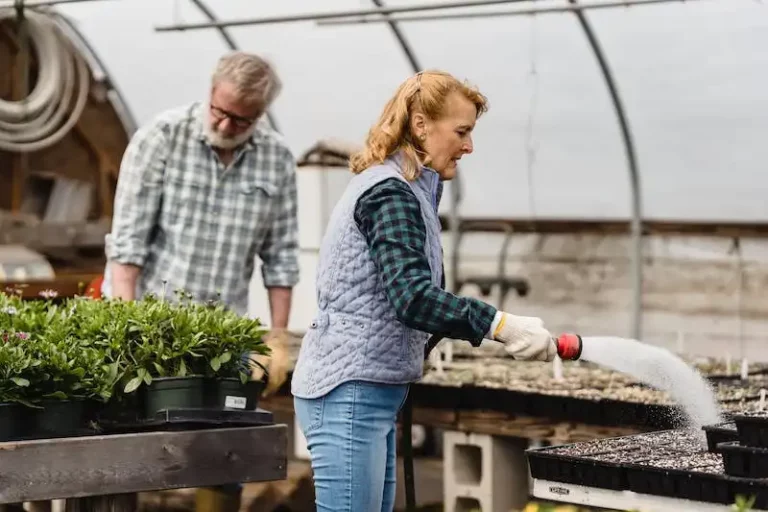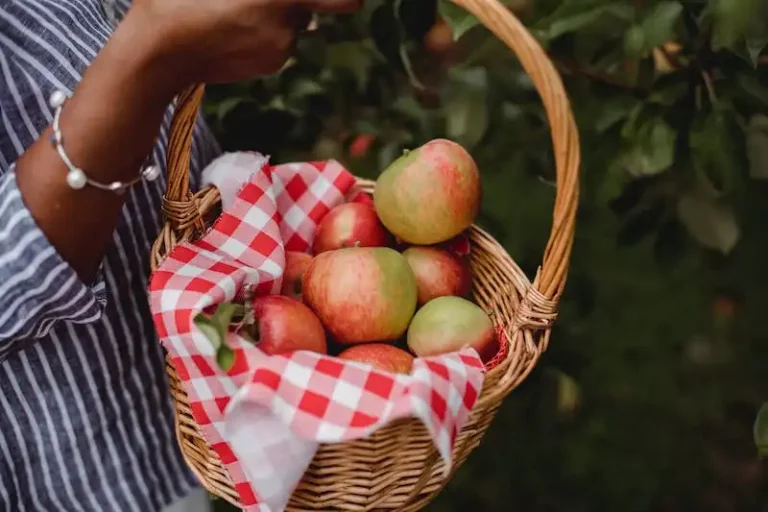The Aquilegia, commonly known as Columbine, is a delicate and beautiful flowering plant that can brighten up any garden. With their unique and vibrant flowers, Aquilegias are a popular choice for gardeners looking to add a splash of color to their outdoor space. Growing Aquilegia from seed can be a rewarding and satisfying experience, and this article will guide you through the process of germinating and caring for these stunning plants.
Before you start sowing seeds, it’s important to choose the desired species of Aquilegia. The most common species, Aquilegia vulgaris, comes in a wide range of colors, including pink, blue, and white. Once you’ve chosen the species you want to grow, you can source the seeds from a reputable supplier or retrieve them from the base of mature plants in your garden.
Aquilegias generally require a cold stratification period to help break their dormancy and prepare them for germination. This can be achieved by placing the seeds in a moist paper towel and keeping them in the refrigerator for 2 to 3 weeks. After this period, the seeds are ready to be sown.
When it comes to sowing the seeds, make sure you choose a location that receives partial shade. Aquilegias prefer cool and moist conditions, and planting them in full sun can cause their delicate flowers to fade. Prepare the soil by removing any weeds and adding organic matter to improve drainage. Sow the seeds on the surface of the soil and lightly cover them with a thin layer of soil or vermiculite.
Once planted, Aquilegia seeds need to be kept sufficiently moist but not waterlogged. Watering from below is preferred to prevent damage to the delicate seedlings. It’s important to note that Aquilegia seeds can take anywhere from 2 to 3 months to germinate, so patience is key. While they’re germinating, make sure to keep the soil consistently moist and provide the right conditions for their growth.
After the seedlings have emerged, it’s important to provide them with proper aftercare. Keep an eye on the weather conditions and protect them from extreme cold or excessive heat. Mulch around the seedlings to retain moisture and suppress weed growth. Remove any weeds that might compete with the young plants for nutrients and water.
As the plants grow, you may need to provide some support, especially if you’ve chosen a tall species. Use stakes or trellises to prevent the plants from becoming top-heavy and flopping over. Additionally, Aquilegias generally do not require fertilizing, as they can obtain the necessary nutrients from the soil. However, if you notice signs of nutrient deficiency, you can apply a balanced organic fertilizer.
It’s worth noting that Aquilegia plants can be short-lived, usually lasting only a few years. However, they readily self-seed, and you’ll often find new seedlings emerging in and around the original plants. If you’d like to propagate your desired species, you can collect the seeds from these self-seeded plants and sow them in a suitable location. This way, you can ensure that your garden will continue to be filled with the beautiful flowers of Aquilegia for years to come.
In conclusion, growing Aquilegia from seeds can be a rewarding experience for any gardener. With the right conditions and care, these delicate and colorful plants will brighten up your garden and provide a stunning display of flowers. So go ahead and give Aquilegia a chance in your garden, and you’ll be rewarded with their beauty and charm.
Aquilegia
Aquilegia, commonly known as Columbine, is a beautiful flowering plant that can give your garden a vibrant touch. To grow Aquilegia successfully, it’s important to provide the desired growing conditions.
- Seeds: Aquilegia vulgaris seeds are generally easy to collect from mature plants. To obtain seeds, wait until the seed pods turn brown and start to split. Remove the pods and allow them to dry fully before planting.
- Origin: Aquilegia plants are native to Europe and are known for their stunning flowers in lavender, white, and other colors.
- Planting: Aquilegia seeds can be sprinkled on top of well-draining soil. The seeds should be planted in a location that receives partial sun and is sheltered from strong winds.
- Winter Sowing: In colder climates, Aquilegia seeds can be sown directly in the desired location in autumn. The seeds will naturally stratify during the winter and germinate in the spring.
- Fertilizing: Aquilegia plants generally do not require heavy fertilizing. Adding a layer of compost or organic matter to the soil before planting will provide sufficient nutrients for growth.
- Care: Aquilegia plants are relatively low maintenance. However, regular watering is necessary, especially during dry periods. It’s also important to remove any dead foliage to prevent the spread of diseases.
- Pollinators: Aquilegia flowers are attractive to pollinators like bees and butterflies. By planting Aquilegia in your garden, you can create a welcoming environment for beneficial insects.
- Transplanting: While Aquilegia seeds can be directly sown, you can also start them indoors in seed trays and transplant the seedlings once they have grown a few inches tall.
- Spread: Aquilegia plants have a natural tendency to self-seed and spread. If you want to prevent excessive spreading, you can remove any seedlings or thin out the plants.
- Location: Aquilegia plants thrive in locations with well-draining soil and partial sun. They can tolerate some shade, but full shade should be avoided.
To enjoy the beauty of Aquilegia flowers in your garden, follow these care instructions and provide the ideal conditions for their growth.
How to grow aquilegias in a garden
Aquilegias, also known by the common name columbine or granny’s bonnet, are beautiful flowering plants that can add charm to any garden. Here are some tips on how to grow aquilegias in your garden:
- Origin: Aquilegias are native to the northern hemisphere, with many species and varieties coming from mountainous regions.
- Seedlings: Aquilegias can self-seed and establish themselves, so you may find young plants appearing in your garden. Alternatively, you can buy seeds or retrieve them from mature plants.
- Sowing: Aquilegias are easy to grow from seeds. Sow the seeds in early spring or late summer. Prepare the soil by removing any weeds and loosening it. Sprinkle the seeds on the soil surface and lightly press them down. Cover the seeds with a thin layer of soil.
- Germination: Aquilegia seeds require cold stratification for a few months before they can germinate. You can mimic this process by refrigerating the seeds for about 6-7 weeks before sowing them.
- Watering: Aquilegias prefer well-drained soil. Water them regularly, especially during dry spells, but avoid overwatering as they don’t like soggy conditions.
- Light requirements: Aquilegias grow best in partial shade or dappled sunlight. They can tolerate full sun, but the flowers may fade more quickly.
- Plant characteristics: Aquilegias have delicate, spurred flowers in a wide range of colors, including shades of blue, white, pink, yellow, and lavender. The flowers are attractive to pollinators like bees and butterflies.
- Propagation: To propagate aquilegias, you can divide the plants in early spring or collect and sow seeds from the mature plants.
- Pruning: Aquilegias are relatively low-maintenance plants and do not require much pruning. Remove any dead or damaged foliage to keep the plant healthy and tidy.
- Attention: Always handle aquilegias with care as all parts of the plant are toxic if ingested.
By following these care instructions, you can enjoy the beauty of aquilegias in your garden for many years to come.
How to Grow Aquilegia common name Columbine
Aquilegia, commonly known as Columbine, is a beautiful flowering plant that can be easily grown from seeds. Here are some tips on how to successfully grow Aquilegia:
- Choose the right location: Aquilegia prefers partial shade but can also tolerate full sun in cooler climates. When selecting a location, make sure it has well-drained soil.
- When to plant: Aquilegia seeds can be sown in spring or autumn. Alternatively, you can buy seedlings from a gardening center or online.
- Preparing the soil: Before planting, remove any weeds and loosen the soil to a depth of about 6 inches. Adding some organic matter, like compost, to the soil is also beneficial.
- Sowing the seeds: Aquilegia seeds can be sown directly in the desired location. Spread the seeds evenly on the soil surface and cover them with a thin layer of soil. Keep the seeds moist and they should germinate within a few weeks.
- Watering: Aquilegia plants need regular watering, especially during hot summer months. Make sure to water them sufficiently and avoid overwatering.
- Care and aftercare: Aquilegia plants are generally low maintenance. They do not require much fertilizing, but a light application of balanced fertilizer in early spring can be beneficial.
- Winter care: In colder regions, mulch around the base of the plants in late fall to protect them from harsh winter conditions.
- Plant characteristics: Aquilegia plants come in a wide variety of colors, including shades of blue, pink, and purple. They have delicate, bonnet-shaped flowers that add beauty to any garden.
By following these tips, you can easily grow Aquilegia plants and enjoy their stunning blooms for years to come.
How and Where to Plant Aquilegia
When growing Aquilegia, also known as Columbine, it is important to choose the right location and give the plants the care they need.
1. Place the Aquilegia plants in a location that receives partial shade. They prefer well-drained soil with a pH level between 6 and 8. Prepare the soil by loosening it with a garden fork and mixing in compost or organic matter.
2. Aquilegias can be grown from seeds or transplanted from trays. If starting from seeds, sow them in trays in early spring. Keep the trays indoors until the weather warms up and then move them to a sheltered outdoor location. When the seedlings are big enough to handle, transplant them into individual pots or directly into the garden.
3. If buying Aquilegia plants, choose ones with healthy foliage and avoid any that appear diseased or have damaged roots. Plant them in a similar manner as the seedlings, ensuring they are placed at the same depth as they were in the pot.
4. Aquilegias are not heavy feeders, but they do benefit from a sprinkling of fertilizer in early spring. Use a balanced, slow-release fertilizer according to the package instructions. Avoid fertilizing once the plants start blooming to prevent excessive leaf growth.
5. Aquilegia plants produce seed pods after flowering. If you want to prevent self-seeding, remove the pods before they have a chance to spread. However, if you desire more plants, allow some pods to mature and collect the seeds for future planting.
6. Regular pruning is not necessary for Aquilegia plants. However, if you find the foliage becoming unsightly or the plant is overcrowded, you can remove some of the leaves at the base to improve airflow.
7. Aquilegia flowers attract pollinators, such as bees and butterflies, so they are a great addition to any garden. The unique and vibrant colors of their flowers, which can range from blue and purple to pink and white, make them a perfect choice for adding visual interest to your outdoor space.
8. Aquilegias are winter dormant plants, meaning they will die back in the colder months. To protect the plants during this time, mulch around the base with a layer of organic material, such as straw or wood chips. This will help insulate the roots and prevent freezing.
By following these planting and care tips, you can successfully grow Aquilegia and enjoy their beautiful flowers throughout the growing season.


